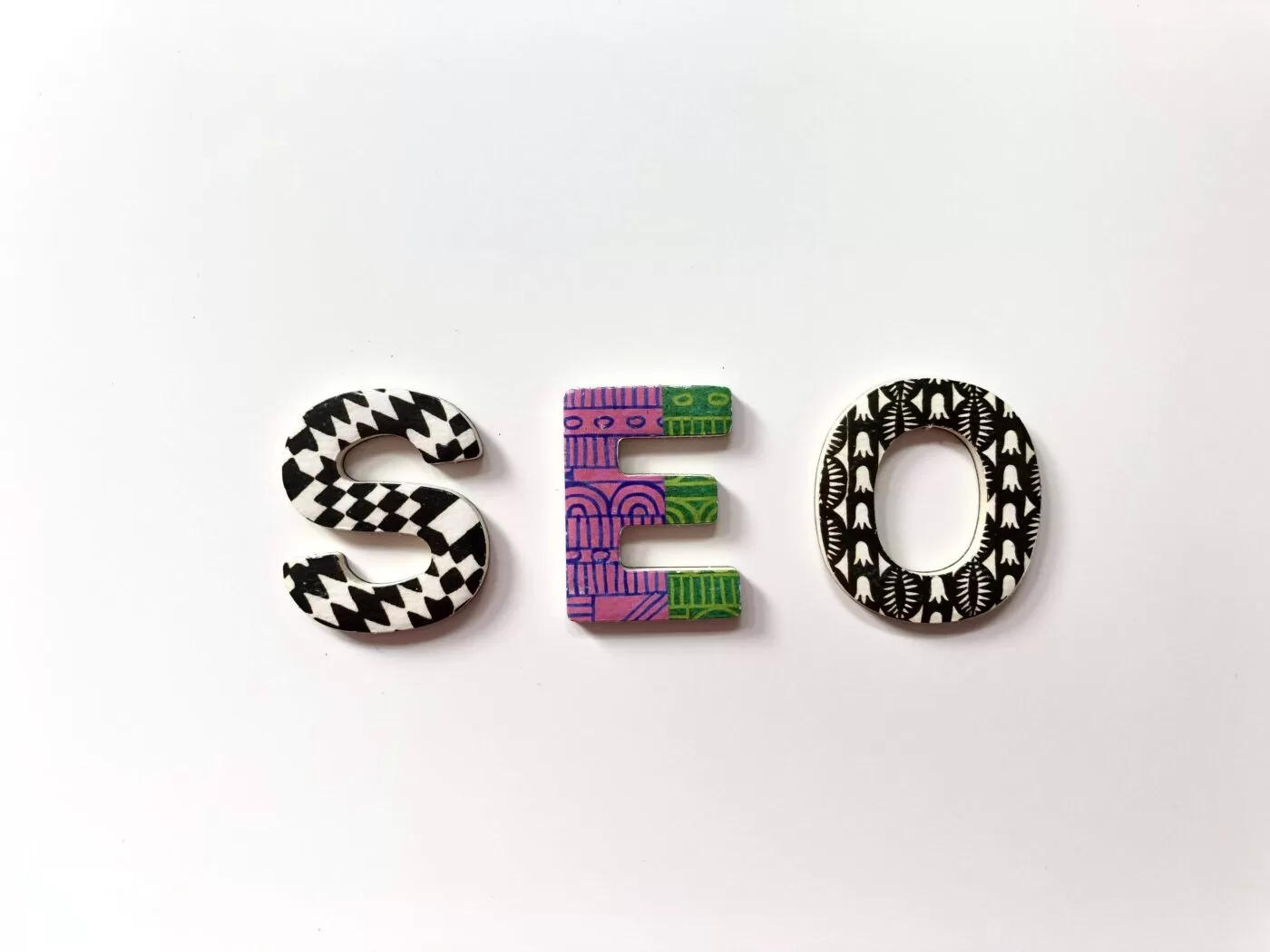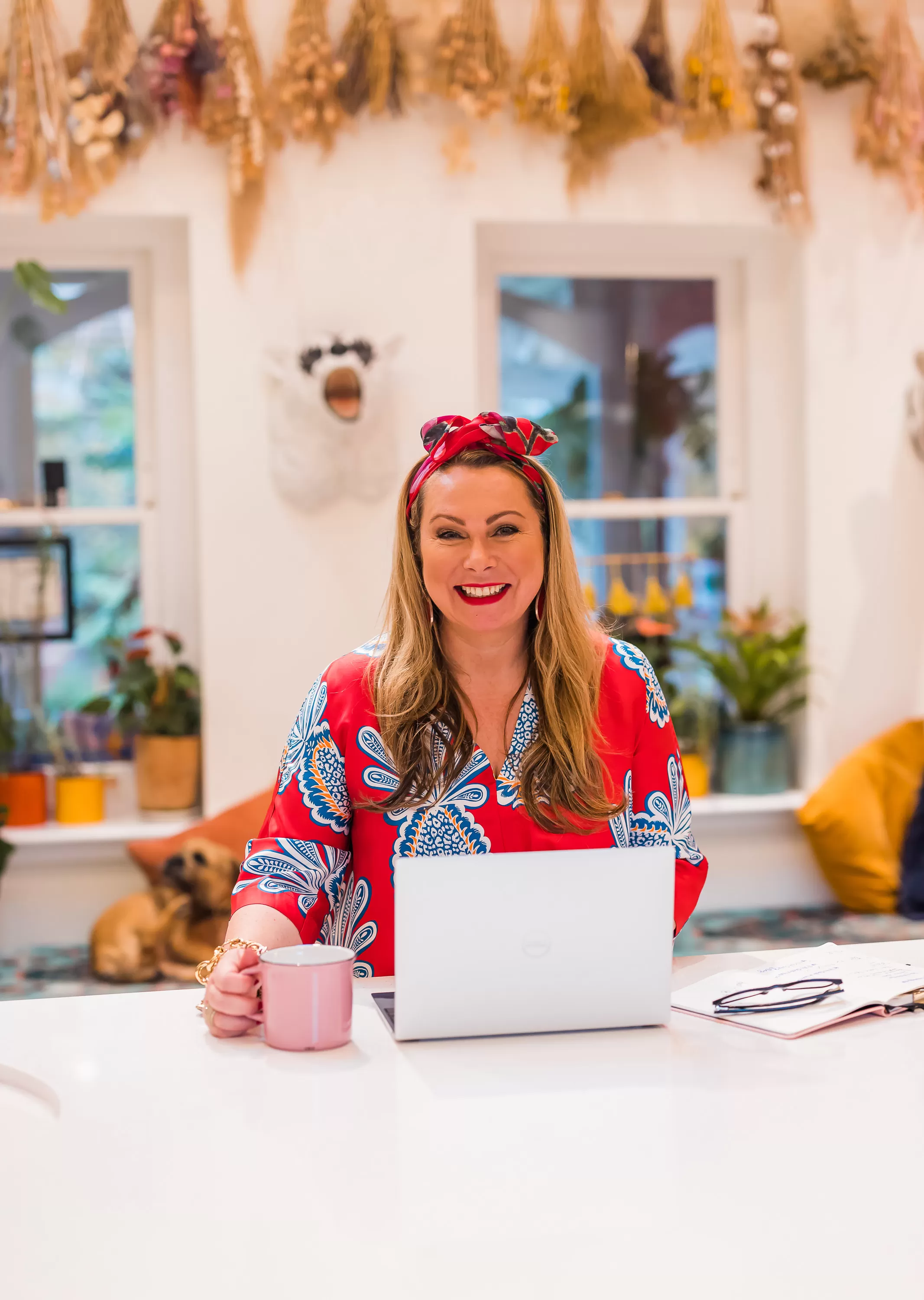Need it for Christmas? Check delivery times

How to improve your SEO ranking and increase traffic to your website
Marketing & PR
By Team Holly & Co
UPDATED 16TH AUGUST 2023
When it comes to Search Engine Optimisation, let’s start by covering off what many of us will be thinking: What is SEO? How can I use SEO to benefit my business and what’s the best way to improve my SEO ranking? Let’s find out…
How to improve your site’s ranking and boost your SEO
Well, let’s share some relevant small business advice that many independent businesses have been asking for — how to understand on-page SEO. Whether you’re thinking about launching a startup or have been a founder for years and want to grow, SEO can help. It now plays a key role in building your brand.
Search Engine Optimisation (SEO) is essentially a tool you can use to improve your website copy to increase the chances of search engines finding your web pages when people look for them — it’s like wearing a huge neon puffer jacket so they can spot you or leaving a little trail of clues to help people discover what they’re looking for — ie. you. SEO for your website can be great for putting you ahead of the competition if more people are looking for the particular wording you’ve used rather than your peers, for example. It basically gives you a headstart in being found.
What is SEO (exactly) and why should you care about it?
The drivers behind the search engines want to be as helpful to customers as possible. So the easier you make it for them to find your content (when their bots crawl through everything that’s available online), the quicker the engine will be able to present your information as a potential option for anyone looking it up (as they’ll offer your content up first if it seems the most relevant). So the higher your SEO ranking, the more likely you are to be presented at the top of the list — and get first dibs on customers. Once upon a time, SEO was all about trying to fit in certain words or phrases as often as possible, until very often the copy sounded clunky and somewhat unimaginative to read. Thankfully that’s now not the case.

Search Engine Optimisation (SEO) is essentially a tool you can use to improve your website copy to increase the chances of search engines finding your web pages when people look for them — it’s like wearing a huge neon puffer jacket.

How to improve your site’s SEO ranking? Is it worth your time and resources?
Absolutely yes. It’s easy to ignore what we don’t understand (or think we don’t have time for). However, according to The Business Journals, 97% of people learn more about local small businesses online than anywhere else¹. So it pays to be seen. You want potential customers to find you first, and in order to do this, you need to share content with them regularly, in a consistent fashion, that matches what they are after. It can help you bring in more customers and boost your conversion rates, plus it costs nothing but your time to do. That’s why for many small businesses, it’s well worth the effort, yet often not always something you know how to do — so we’re here to help (and if you’re just starting out and want to know how to set your business up for success, here are some more tops tips for you).
How to optimise your primary landing pages (also known as pillar pages)?
These are all the pages that people might land on when coming to your website. In fact, every page should be optimised by adding the exact phrasing that people might type into a search engine as you never know how certain trends might take off and people search for certain topics in the future. So even if a page isn’t visited often, it can still help your overall site to be discovered if it’s relevant. In general, your pages should have at least 450 words on them, and contain keywords or synonyms of those (ie. if it’s not ‘gifts’, it’s ‘presents’ and so on).
How do you do keyword research for SEO?
There are tools you can use to help you do your ‘keyword’ or ‘keyphrase’ research and they are very clever. You essentially just think to yourself, “If I was looking for X online, what phrase would I put into Google to find it?” So if I wanted to know how to start a business, I might put in ‘Setting up a business’ or ‘Launching a startup’ or ‘New business ideas’ for example. When you add these into a tool like Google Ads Keyword Planner, it will then return a list of results showing you other phrases people put in on that particular topic, and importantly, how many hits each one had. Then you include the highest ranking of these (ie. the most searched for phrases) in your meta descriptions and titles to help optimise your results (ie. dress it in the neon jacket).
97% of people learn more about local small businesses online than anywhere else¹.
What’s a meta description and how do you write a good one?
Good question. Meta descriptions are the little 150-160 character summaries that show up online when you are searching for something. Again, if people are just scanning through quickly, it helps them find out more about what your business or proposition is about. That’s why you need a clear call to action (CTA) in your meta descriptions. For example, your copy might say, “If you’re looking for small business advice on how to increase your social media engagement, manage the algorithm or boost your Instagram followers, read this.” Be specific.
Crucially, it’s one of the tools that search engines use to investigate what you’ve got to offer and how relevant it is to what people are searching for (though it doesn’t do this directly but by ascertaining how many people have liked it enough to click through when they’ve read it). So including keywords here is an excellent way to improve your chances of being found, and improving your click through rate (also known as CTR).
How to write an optimised SEO title for your web pages
The more accurately your title reflects what your copy is about, the more likely it is to reach people, so carry out your keyphrase research and write the titles around them. These titles should be no longer than 60 characters, otherwise customers will only see part of them. As search engines scan from left to right, it’s better if your main keyphrase (or ‘primary keyphrase’ as it’s also called) is on the left as it will boost the chances of your content being found first as well.
Use clear subheadings: Breaking up your blog posts and page content really helps
Adding clear subheads throughout helps make your content easier to scan through and therefore more user-friendly. It also helps with SEO so try and include any relevant phrases if it feels natural. A good rule of thumb for SEO copy is that if you can easily spot it (perhaps because a particular phrase is being overused or feels like it’s been shoe-horned in somehow), it’s likely to put people off and if they don’t click through, your ranking will fall and others will appear before you. Your copywriting should sound natural and really reflect what they’re looking for as your aim is always for them to pick your content above other people’s, as ultimately, this makes it much more likely for them to shop with you.
Put a process in place to ensure you’re being SEO-friendly in future
Once you’ve updated (or optimised, if you like) your existing web pages if you have them, it’s wise to make sure that you’re never in a position to have to go back and do all this again. Especially if you’re right at the beginning of your journey and are just starting a business now. Put a process in place to make sure that you’re always building this into your day-to-day practices. Maybe give yourself a template to follow so you remember to include SEO key phrases every time, in every web page you create.

Your copywriting should sound natural and really reflect what they’re looking for as your aim is always for them to pick your content above other people’s, as ultimately, this makes it much more likely for them to shop with you.

Find and remove broken links in your website: have a tidy up
For many founders, getting a website up and running is hard enough. Yet it is worth also going through it regularly to see if any pages are broken. This happens from time to time, when you get an error message pop up. Aside from it being rather frustrating for customers and likely to add to your bounce rate (ie. how quickly people leave your page after they’re visited it), it means you are losing the SEO value on the link, too — so set yourself a regular reminder to tidy these up.
The importance of backlinks: how to backlink and the benefits to your website
Backlinks are the clues you can leave in other people’s websites (or elsewhere in your own website) to then drive customers to finding your content. A great way of doing this is via a blog. It means you can refer to one article from another one without it feeling shoe-horned in and it also improves your ranking.
And that’s a round up of what SEO is and why it’s important for small businesses. In the current climate, we essentially need all the help we can get. So do yourself a favour and start optimising your copy, because the more SEO-friendly it is, the more customers will be able to discover you.
How to improve your SEO: key takeaways…
If you do nothing else, remember these 5 points.
- Optimise your primary landing pages (also known as pillar pages)
- Do your keyword research
- Always add your meta descriptions
- Optimise your titles for SEO and add clear subheads
- Clean up broken links and add backlinks
Sources: The Business Journals article on SEO facts
Images: 'Silver Lining Finder' magnifying glass — by Vinegar & Brown Paper.
Related content
MORE ARTICLES ON MARKETING & PR

How do I get press coverage for my business?
Marketing & PR

What attracts customers’ attention? Ask Real Hackney Dave…
Marketing & PR
Be the first to know
Sign up to our emails for brand new small business magic and inspiration. And if you create an account, you’ll also get exclusive product drops, discounts and more from Club Holly & Co, too.
